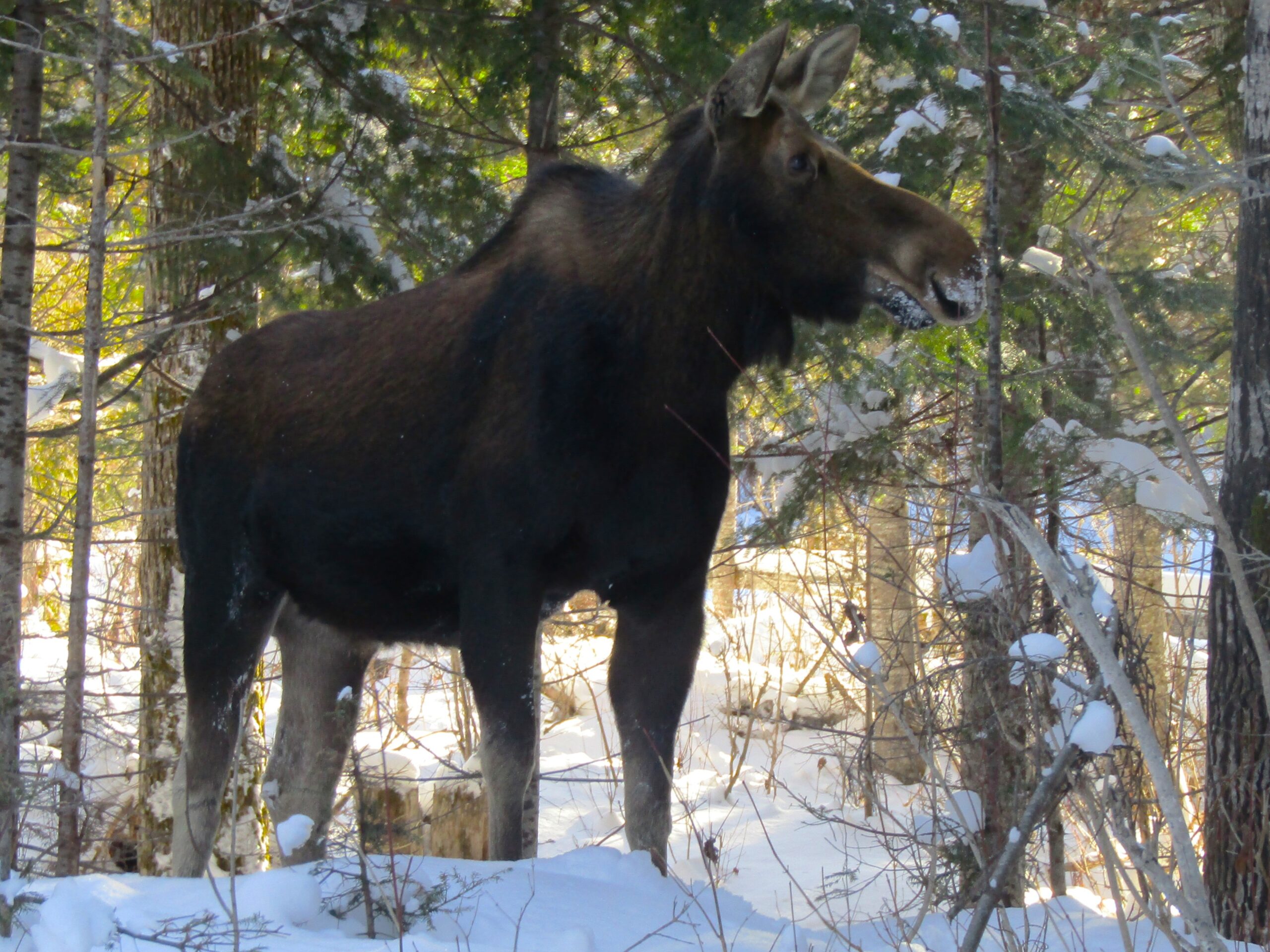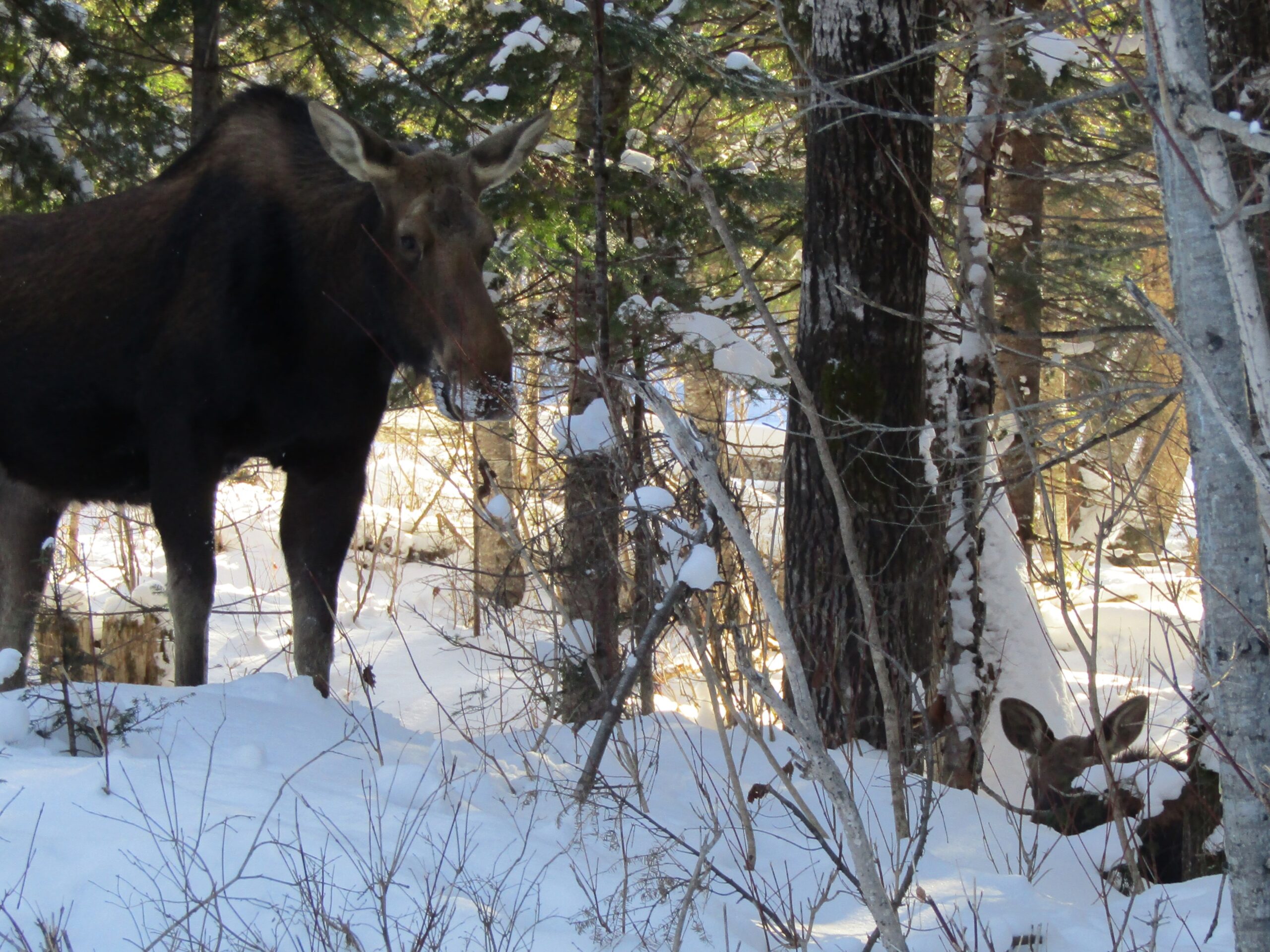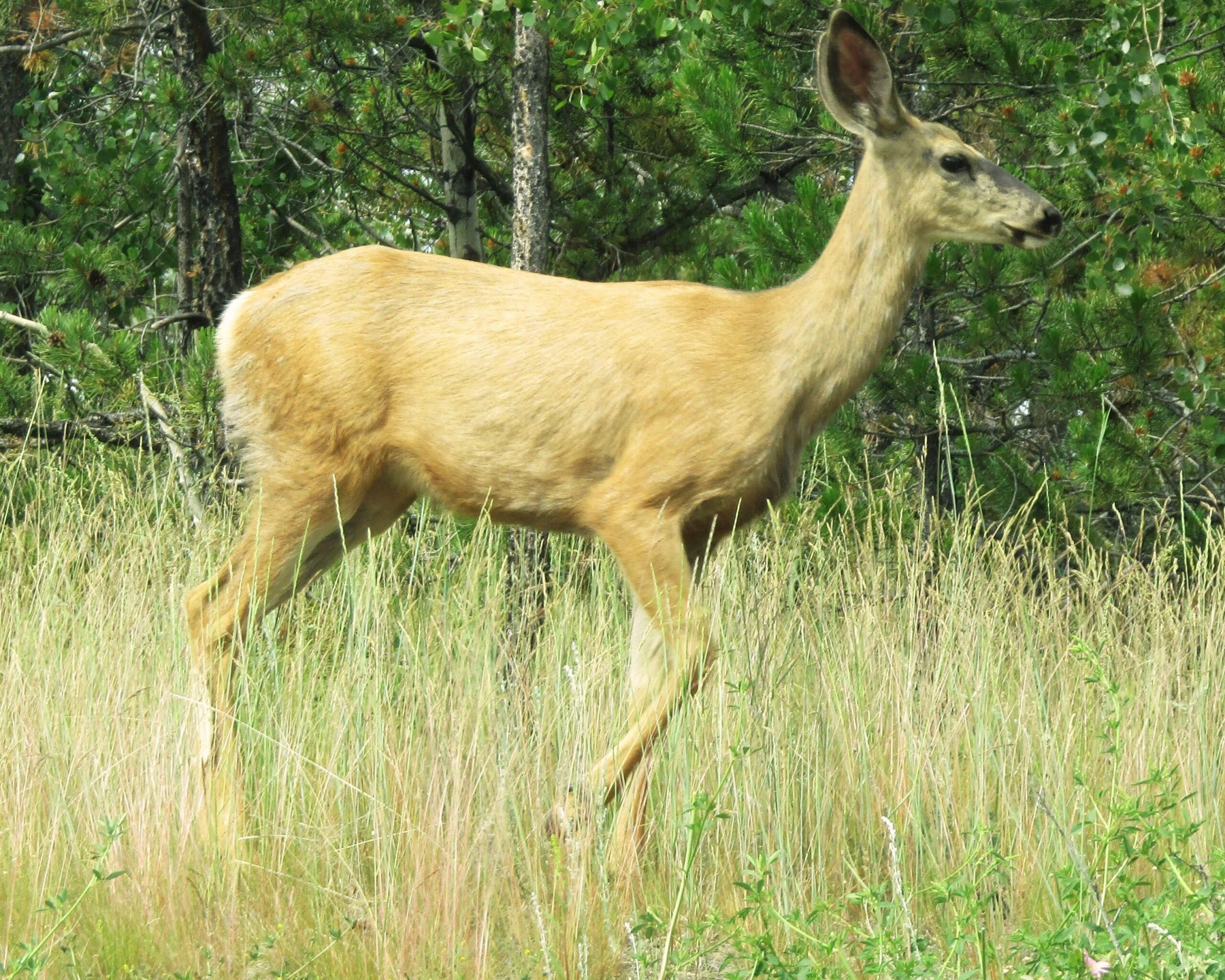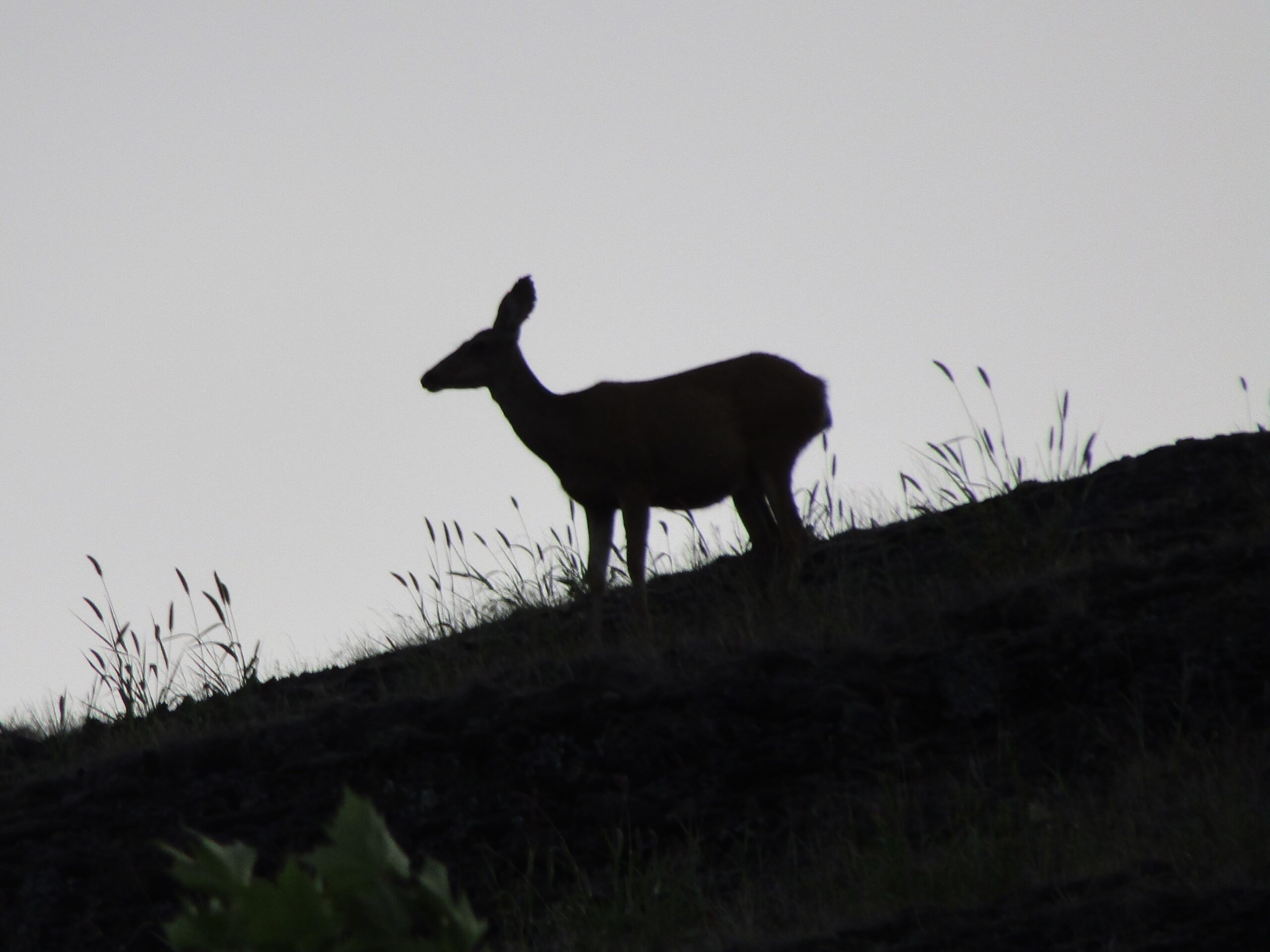The deer family
Elk
Elk are surprisingly huge, especially when you’re up close. I found they were much less timid than deer, at least in National Parks where hunting isn’t permitted. This allowed me a closer look at these magnificent beasts – but I stayed close to the safety of the car. Elks could easily harm a human, if threatened.
Most sightings were on the road, and moose in particular have a sad reputation for causing fatal road accidents. I had a very close shave with a deer – narrowly avoiding it after it froze in the headlights on my vehicle. It’s wise to drive carefully in wildlife areas, especially at dawn, dusk, and after nightfall.




Moose
I had been in Canada for more than six months, much of it exploring the wilderness, without a single moose sighting. I had been lucky to see many other of Canada’s wildlife, but the iconic moose eluded.
My first sighting was around Christmastime, when my sharp-eyed girlfriend spotted an adult female between the trees, on a winter road trip through Quebec.
As we stopped to observe it, we noticed she had a young calf with her. At this point, we deliberately stayed in the car, and tried not to disturb them. The mother seemed unperturbed, but the calf stayed well back – not allowing for great photos. Still, it was a majestic sighting of the iconic Canadian animal.


Deer
There are several types of deer around Canada, many of which you will spot on roadside. The white-tailed deer, and the large-eared mule deer, are both common across the country.
Unfortunately, moose are still hunted, making them rarer. Elk were wildly distributed in the National Parks of Banff and Jasper, but I saw few outside of those. Meanwhile, I spotted deer everywhere, even near urban centres.
Deer tend to be on high alert around humans, so it can be hard to get a clear, uninterrupted sighting – and even harder to get a photo. Hopefully the sheer numbers of deer should mean you have the opportunity to see them sooner rather than later.




